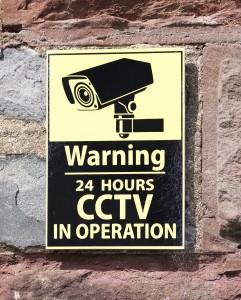The application of face recognition in social control
Law enforcement agencies has been using face recognition to control social order. For example, they have been integrating real-time face recognition into existing surveillance and video systems. There are also signs that law enforcement agencies incorporate photos and images of people taken from social media into their databases. In the future, or now, law enforcement agencies may also try to fill the focus database with large other non criminal photos. It was reported that the law enforcement services concerned had been able to access the database of visas and passports, the Department of Defense’s biometric database and the driver’s license database, which was publicly available or protected by government agencies. However, the images in these huge databases can even access part of the range of face recognition data.
However, law enforcement agencies may have broader plans than those. Law enforcement agencies want to use face recognition systems to track people’s movements from “major events” to “important events” such as political gatherings, identify people in the “public database”, and “automatically monitor at the places of concern” and identify “interested people” from photos. This shows that law enforcement agencies want to be able to search and identify people in photos of people and photos posted on social media websites, even if the person in the picture is not arrested or suspected of committing a crime for a crime.
Although it is still challenging to recognize unknown faces in a crowd in real time from a very large face image database, there are not too many technical problems to solve. The current technology has the ability to track people who are being watched, even if they are in a crowded crowd. Russian developers have announced that their system, called finderface, can identify pedestrians on the street with about 70 percent accuracy if the person has a profile on social media. Law enforcement agencies in other countries are working with face recognition providers to identify people from archived CCTV videos, and to calculate the ability to correctly identify people in videos. The use of this technology includes “screening people in crowded spaces (such as airports, shopping malls, cinemas) and” obtaining evidence for video on crime sites (such as convenience stores) Check “. Although the ability to identify non cooperative personnel in video is still challenging, the recognition accuracy can be further improved in view of better cameras, better design and the latest algorithm development.
The shortcomings of face recognition in the application of social control
In In fact, face recognition providers have worked with large event organizers to identify people in real time in major sports events. Although there are obvious security risks and privacy threats in such systems, police are also increasingly interested in using more and more camera methods for face recognition. For example, wearing a personal surveillance camera has face recognition, or is enabling face recognition to be included in the future. The increase in facial recognition of cameras that are worn by you may undermine the primary purpose of these tools: to improve police interaction with the public and to increase justice and oversight of law enforcement. But if people suspect that their interactions have not been properly documented and they can be identified now or in the future, they are unlikely to have more trust in the police.
Police are always in political protests in public places, and they are increasingly wearing cameras while monitoring them. Face recognition allows police to quickly identify and document specific protesters, as well as their speeches and actions, and prevent the participation of those who are usually targeted by the police. Facial recognition of cameras on the body will also allow police officers to secretly identify and monitor the public on a scale we have never seen.
The use of face recognition may also include knowing others in the dark at night, predicting their future lives based on their childhood appearance, and generating images of people who are similar to photos from police sketches and even DNA samples. Researchers are also developing methods of deep learning and artificial intelligence to improve the accuracy and speed of face recognition systems. Some claim that these advanced systems may detect private information such as sexual orientation, political opinion, high IQ, criminal behavior tendency and specific personality traits in the future.
If there is no pre collected image database, face recognition will not work. Therefore, many national social control agencies are trying to build these databases today. The accuracy and speed of face recognition and recognition algorithms are constantly improving. This means that it is ripe to enact new laws to prevent over collection of images in the future and to strictly restrict the use of existing images. But before the new law came into effect, what measures could ordinary citizens take to avoid abuse of their privacy?
Post time: Jul-12-2021


